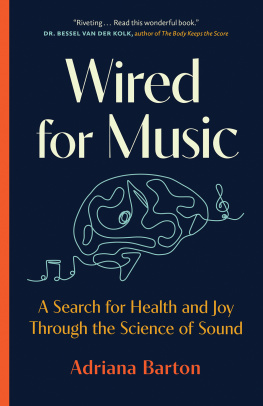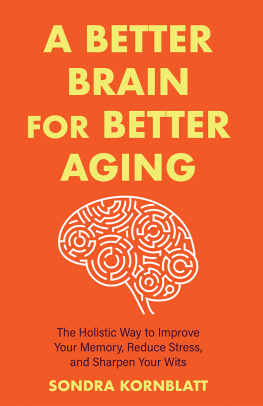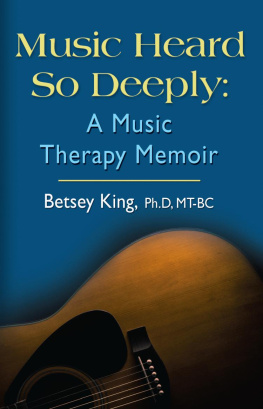Page List


References to health, medical interventions, traditional healing, and research in this book are not intended as medical advice, nor should they be regarded as a substitute for medical advice, professional expertise, or medical treatment. Although information provided in this book has been carefully considered by the author and the publisher, medical science is constantly changing and evolving. Therefore, all information in this book is provided without any warranty or guarantee on the part of the publisher or the author. Neither the author nor the publisher or their representatives shall bear any liability whatsoever for any personal injury, property damage, or financial losses.
Copyright 2022 by Adriana Barton
22 23 24 25 26 5 4 3 2 1
All rights reserved. No part of this book may be reproduced, stored in a retrieval system or transmitted, in any form or by any means, without the prior written consent of the publisher or a license from The Canadian Copyright Licensing Agency (Access Copyright). For a copyright license, visit accesscopyright.ca or call toll free to 1-800-893-5777.
Greystone Books Ltd.
greystonebooks.com
Cataloguing data available from Library and Archives Canada
ISBN 978-1-77164-554-6 (cloth)
ISBN 978-1-77164-555-3 (epub)
Editing by Lucy Kenward
Copy editing by Erin Parker
Proofreading by Jennifer Stewart
Index by Stephen Ullstrom
Text design by Belle Wuthrich
Greystone Books thanks the Canada Council for the Arts, the British Columbia Arts Coun-cil, the Province of British Columbia through the Book Publishing Tax Credit, and the Government of Canada for supporting our publishing activities.

Contents
A young cellist learns the hard way
What makes us musical?
How our innate musicality gets rusty
Soothing sadness, depression, anxiety, and stress
Does playing an instrument make us smarter, more creative?
The perks of listening, from pump tunes to sleep songs
If music heals, can it harm?
How music brings us closer
Music for healthy aging
Spiritual growth through rhythm and song
Prelude
I HELD A CELLO for the first time before a panel of stern-looking adults who peered down at me from a conference table, asking questions and taking notes. I was five years oldtoo young to realize this was an audition of sorts.
Funds were tight in our home in small-town Quebec, but my mother had caught wind of free violin lessons at the state-run conservatory a short drive away. Inside the drab building, the first teacher we met was a cellist with the Montreal Symphony Orchestra, on the hunt for new students. This was 1975, long before cello virtuoso Yo-Yo Ma became a household name, or a Bond girl in a Hollywood blockbuster used her cello case as a getaway sled. When the gray-haired teacher asked if Id like to play the cello, I had no clue what he meant. I heard Jell-O and nodded my head.
Before I knew it, I was sitting in front of the admissions committee on an upside-down wastepaper basket, the only seat small enough. The gray-haired man inspected my chubby fingers, stretched them apart, and announced they were strong enough for the job. Next, he handed me a quarter-sized plywood cello and showed me how to curl my right hand around the end of the bow. Then he told me to play. Tentatively, I drew the bow across the strings. Screech! I tried again. This time, the whisper of horsehair against metal became a wave of sound that rippled through me and bounced around the room. The next bow stroke triggered another wave of vibrations, another swell of delight. I remember searching for a polite way to describe this sensation to the adults in the room. I can feel it in my bottom.
In those few moments, I discovered the vast, transformative power of sounda shock of wonder I would never forget.
Introduction
RIFFLING THROUGH my first homeowners insurance policy, I did the math: my most valuable possession was a cello I hadnt played in years. This took me aback because by then, in my mid-thirties, I couldnt even remember the last time Id laid eyes on it.
The bulky instrument lay on its side, tucked behind the couch. I hauled the battered case to the middle of the room. Did I really want to open it? Unlatching the lid, I forced myself to look. My cello was covered in a layer of fine dust. As I gazed at its shapely form, another calculation hit me: Id spent more hours of my life with this cello in my arms than with any lovermy husband included.
I plucked the A string. Slack and muffled by the case, it made a sickly note. When I picked up the bow, a plume of white horse-hair fell across my wrist. The wiry hairs had detached from the tip. My throat tightened. I had never seen my bow like this. For a moment I thought about getting it rehaired, but decided there was no point.
I had given up making music.
Strapping the bow into the case, I closed the lid and stowed my cello back behind the couch. What a waste, I thought, for the umpteenth time.
For as long as I could remember, music had enchanted me. Thats what music does. Some of us sing to Beyonc when were going through a rough patch, or collect vintage synthesizers to play 80s riffs from Duran Duran. Others have a thing for Balinese gamelan orchestras, Polish mazurkas, Swedish death metal.
Music moves us in mysterious ways. We get goosebumps, chills. A sudden urge to dance. Songs fill us with pleasure, revving up some of the same brain pathways stimulated by chocolate or sex.
The inability to enjoy music of any kind is so rare that brain specialists consider it a neurological condition: Musical anhedonia affects roughly 3 to 5 percent of us. People with this abnormality have glitches in the auditory-processing and reward systems of the brain. Everything from country to electronica leaves them cold.
The rest of us are wired for rhythm and song. Even if we lie perfectly still, music fires up the putamen, a nut-shaped structure at the base of the forebrain that helps regulate our motor movements. When music tickles our eardrums, our gray matter shimmies back.
Musics stimulating effect on the sentient jelly between our ears is more than just a geeky fact. During my twelve years as a journalist covering health at Canadas national newspaper, The Globe and Mail, I kept learning about the extraordinary ways music can support our health and well-being.
In Victoria, British Columbia, I interviewed a neurologic music therapist who explained that our brains process words differently when they are spoken versus sung. She had drawn fleeting responses from a brain-injured police officer, Ian Jordan, who had spent thirty years in a hospital bed, unable to communicate. When she sang the words, Ian, lift your finger, he did precisely that.
Over the years, though, I spotted more and more articles and blog posts making laundry-list claims about the power of music. All of a sudden, songs not only doubled as painkillers but could also supposedly make us smarter. Many of these reports smacked of pseudoscience (sorry, folks, but singing bowls cannot cure cancer) while others offered no data on what kind of music did the trick. Were they talking about clinical music therapy or cranking up Nicki Minaj in the car? Daily practice on an instrument, or playing the banjo on Sundays? I wanted the nitty-gritty, because in music, as with medicine, the details matter.









